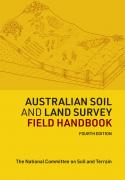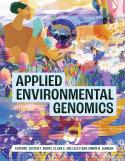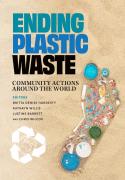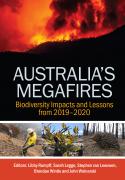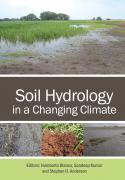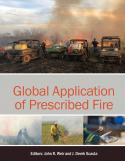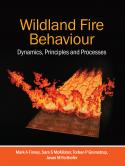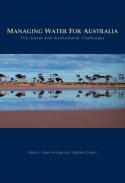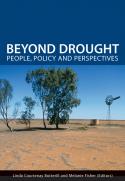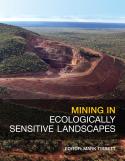What must we do to achieve a sustainable society? There is no one answer. The first steps towards sustainability cover a whole spectrum of economic, social and environmental issues.
In this volume Australian leaders from a wide range of fields discuss the key issues we must address if we are to move towards a more just and sustainable future. They identify the major concerns and challenges for achieving sustainability in the areas of: human health, water resources, land use and natural ecosystems, energy, equity and peace, economic systems, climate change, labour forces and work, urban design and transport, and population.
Achieving sustainability will require major changes in our current approaches. The thought-provoking chapters in this book provide a solid introduction to the issues in the search for a genuine path to sustainability.
- Page 1Abstract
The Earth’s life support systems are in peril. As a species, we are not living sustainably and are accelerating towards collapse of the natural capital on which human society and its economy depends. Sustainability refers to the capacity of the biosphere to provide for the full range of human concerns in the long term. In Australia we are faring well economically but both our social and environmental systems are showing evidence of serious damage. At a global level, inequity and inequality of opportunity lie at the heart of global instability, terror and wars. If we are to survive and prosper as a species, there will need to be a drastic change in conventional values, economic struc- tures and social arrangements. We must also plan our own national development in the context of the ‘globalised’ interdependence of all human populations on each other and on the natural world. We must now make the transition towards sustainability. Australia could be at the leading edge of this endeavour.
- Page 17Abstract
We organise societies, run economies and build infrastructure to make life better, healthier and longer for humans. What is widely missing from some of our main- stream disciplines, including economics and demography, is the recognition that human sustenance, environmental stability and the flow of materials and other ‘services’ from nature are absolutely central to good health, survival and social advance. The Earth’s ecosystems are the life-support systems for all human societies and the basis of our economic life, and we disrupt them at our peril. Recently, the idea has emerged that health is largely a matter of individual choice, behaviour and access to health care. But it is population level shifts in human culture, technology and environ- mental demands that have, throughout history, altered the patterns of well-being, disease and survival. We must now conduct our collective living on the non-negotiable terms of the natural world.
- Page 33Abstract
Darwin’s concept of fitness implies inequalities and competition as the main drivers of the evolutionary process. Yet cooperation within and between species is essential to achieve stable societies, a process which is supported by complexity theory. Over recent years there have been increasing inequalities in access to economic and natural resources between and within industrialised and developing countries. Recognition of these disparities by the dispossessed, combined with resource depletion and population growth, promote ethnic and religious discord and violence that can only exacerbate the situation. Achievement of peace and sustainability for our precarious world will require a revolutionary change away from denial and towards widespread consideration of carrying capacity and inequality, rather than aggravating instability through policies embodied in the so-called ‘War on Terror’. This will entail an ideological shift from competition towards cooperation.
- Page 49Abstract
The Australian economy has grown strongly for the last 50 years. What we now need to do is concentrate on the balance between the economy, the well-being of the community and the sustainability of the natural environment. A reduction in the rate of economic growth would not imply that our standard of living would decline. On the contrary, abandonment of economic growth as an end in itself is a prerequisite to a sustainable future Australia. In the words of John Stuart Mill ‘a stationary condition of capital and population implies no stationary state of human improvement … there would be as much scope as ever for all kinds of mental culture and moral and social progress; as much room for improving the Art of living, and much more likelihood of its being improved, when minds ceased to be engrossed by the Art of getting on.’
- Page 61Abstract
Two centuries of European-style industrial agriculture has resulted in degradation of Australia’s shallow soils, with increasing salinity, decreased and polluted river flows, loss of biodiversity and declining trade opportunities. Restoring an ecologically sustainable environment will require a nation-wide revolution in land use, involving a mosaic of commercial enterprises in partnership with natural ecosystem services, including the conservation of Australia’s native vegetation and cessation of land clearing. Tackling the causes rather than the effects of land degradation will require an integrated approach involving cooperation between agriculturalists, scientists and governments to achieve sustainable food production for Australia and its trading partners.
- Page 79Abstract
Australia is the most arid inhabited continent, with a low and variable rainfall. The Murray–Darling river system is our most important water resource, comprising 14 per cent of the Australian land mass. Over the past 80 years, extensive use of this water resource, mainly through irrigation and the building of levees, has produced adverse environmental consequences such as reduced river flows, water pollution, down- stream salinity and loss of biodiversity. The National Water Initiative proposed by the Council of Australian Governments in 2003 made various recommendations to address these problems. They include improved security of water access, ensuring eco- system health, an efficient market so water goes to the best use, and conservation and recycling of water in cities. A sustainable water future will entail extensive collaboration between governments and stakeholders to ensure that the true costs of water use are borne equitably and accountably in both rural and urban areas.
- Page 93Abstract
The best available evidence indicates that global warming is already occurring and that it will continue throughout this century as a consequence of the human production of greenhouse gases. The projected temperature increases are capable of causing massive changes in the distribution of ecosystems across the face of the earth. The challenge is to produce a portfolio of changes to our energy system that will bring about global emission reductions of 70 to 80 per cent over this century. At the same time, we must meet the needs of the two billion who do not currently enjoy access to usable energy, and those of another two billion who soon will be added to the global population. An appropriately literate community is a key prerequisite if Australia is to tackle this agenda for change.
- Page 109Abstract
Solar energy can replace fossil and nuclear fuels over the next 50 years, thus creating a truly sustainable energy supply system. Diversity of solar energy sources is the key to a stable energy supply. Solar thermal, photovoltaics and wind energy are likely to dominate the solar energy mix. Unfortunately, Australian Government energy policy is not nearly so sympathetic to solar energy as is energy policy in Europe and Japan.
- Page 123Abstract
Australian cities are under pressure as a result both of global climate change and their heavy dependency on oil. The goal of sustainable urban development is to reduce the ecological footprint of the population while simultaneously improving the quality of urban life. Our cities are currently among the world’s worst consumers of transport energy. Car dependency is inherent in policy thinking across the nation but there are growing efforts to change this. We need to create viable population centres that will support enhanced public transport systems. This means increasing the population density of parts of the cities. New funding and policy are needed to move cities towards sustainability. Australian building approval processes need to specify reduced energy and water use and ways need to be found to involve community members in owner- ship of the transition to sustainability.
- Page 137Abstract
Australia has experienced two decades of dynamic economic reform that has included deregulation, privatisation, labour market and tax reforms. These policies have resulted in societal inequalities with almost half of the workforce now employed in jobs that are casual, part-time and/or on fixed contracts. Consequently, the contemporary workforce is divided into two groups: those in high skilled, stressful jobs who would like to work less hours, and those who have to support themselves and their families with insecure incomes. The rewards from economic growth are also very unevenly distributed. As a result, there is a need to rethink and re-conceptualise work in Australia, which has been given a narrow meaning, largely connected to market activity for the purposes of welfare policy design. Outside of the market there is much work that is neither recognised nor rewarded.
- Page 151Abstract
The size of the human population is central to all thinking about sustainability, though for a variety of reasons it is often ignored. The global population grows by 72 million a year and will continue at that rate for 30 to 40 years. On present projections, Australia’s population in 2050 will be 27 million and the world population about 8 or 9 billion. Yet in 2004 the Earth is believed already to be 25 per cent over the limit of its regenerative and absorptive capacity. Each of the topics considered in this book is profoundly dependent on the size of the human population. There is an urgent need for both national and global population policies that take into account that the total impact of a population is equal to the average impact per capita multiplied by the number of people. Increasing population increases our impact.
- Page 165Abstract
The scale and seriousness of Australia’s social and environmental problems are no longer in doubt. We are consuming the opportunities of future Australian generations by our lifestyle choices. And at the global level, human activities are altering the very systems on which our species depends. Doing nothing about the many problems identified in this book, such as climate change, is not an option. It is possible to move to a sustainable future but it will require fundamental changes to our values and national social institutions. We must recognise that we share a common future with the entire human family and the other species with which we share the planet. It is not just our humanitarian duty to improve the lot of the poorest people of the world. It is also enlightened self-interest because a world of increasing inequality will be a world of increasingly destructive tension.
- Page 189Abstract
This appendix contains selected extracts and all of the 33 recommendations that were contained in the communiqué from the 2003 ISOS (‘In Search Of Sustainability’) internet and face-to-face conferences co-hosted by Australia 21, Nature and Society Forum and Sustainable Population Australia. The full communiqué can be down- loaded from the conference website: <www.isosconference.org.au>.







